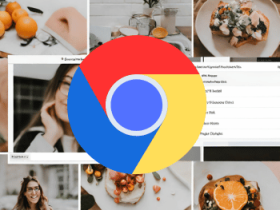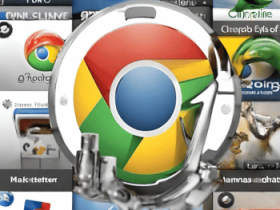The field of e-marketing has witnessed great development over the past few years, as many organizations have realized the importance of its various channels and their ability to reach the target audience with an accuracy unprecedented in the history of marketing.
Tools and platforms specialized in implementing complementary tasks for various e-marketing campaigns have also spread, whether these campaigns are through social media platforms, search engines, or otherwise.
All this eventually led to the emergence of many terms related to this field, which its workers frequently trade. Still, some of these terms may need to be revised even for some workers in e-marketing.
Below, we will review 30 common terms in the field of e-marketing with a simplified explanation of their meaning in alphabetical order:
30 Common Terms in The Field of E-Marketing
1- Algorithm:
It means (algorithm), which is a set of sequential arithmetic rules that are allocated to solving a problem or managing a system; for example, social media platforms are controlled by a set of algorithms that perform certain operations, such as prioritizing the appearance of content or paid ads for a specific group of users according to their behaviors.
2- API:
It is an abbreviation for the term (Application Programming Interface), which means (Software Application Interface), which is a set of protocols, tools, and procedures designed to build application software and facilitate the work of developers, and can be defined as Software code responsible for managing the process of data exchange between more than one party, for example, Email marketing platforms have a special API to link visitor data filling forms in websites to their user accounts.
3- Automation:
It means automation and refers to performing a set of operations in a specific sequence without human intervention, such as sending emails automatically, on specific dates, to any new visitor who registers their data on the site.
4- Avatar:
Refers to the user’s image on social media platforms or his image in his accounts on any site.
5- Backlink:
It refers to the link that a site embeds on one of its pages to direct visitors to your site, and this is one of the most popular SEO strategies.
6- Banner:
It refers to a type of image advertising placed on different websites to attract visitors to click on them and then direct them to the advertiser’s site.
7- Bonus Rate:
Bounce rate means the percentage of site visitors who visit only one page of the site and exit the site directly.
8- Cookie:
It refers to a small file that websites store in the web browser of any visitor, which helps e-marketing officials know some information about visitors, such as their demographic data, interests, and behaviour on the Internet.
9- CPC:
Cost per Click is the cost per click that online advertisers pay for each click a target audience makes on one of their ads.
10- Conversion Rate:
Known as the conversion rate and its abbreviation (CR), it is the percentage of site visitors who took a specific action, such as downloading a book, adding a product to the shopping cart, or purchasing a product, out of the total site visitors during a particular time.
11- CTR:
Click-through rate refers to the percentage of visitors who click on an ad on any website.
12- Domain:
Domain means (domain name), a unique name that does not repeat for the website and can be purchased with an annual subscription from a company that provides hosting services and domain names such as Godaddy, Hostgator, and others.
13- Email Marketing:
This term means email marketing; it is considered one of the classic areas of e-marketing, as it arose with the beginnings of the emergence of the Internet. It includes sending emails to subscribers to your mailing list on your site, in various forms, from these messages that contain a promotional offer, some of which have explanatory explanations of the product or service.
14- Engagement Rate:
It is a measure of the target audience’s interaction rate with the content posted on your social media accounts. It is often limited to the percentage of shares, comments, and likes.
15- Heatmap:
It is a feature provided by some tools, such as Crazy Egg, to clarify the degrees of audience interaction with some website areas, as this feature translates this into different colour connotations. The red colour often symbolizes the most attractive areas for site visitors.
16- Impression:
This term stands for the ad appearing once in front of one of the people targeted by that ad.
17- Inbound Link:
This term means an external link, which is the link on a site; it points to your site and directs visitors to your site as soon as they click on it.
18- Internal Link:
This term refers to an internal link on one page of your site that directs visitors to another page within your site when they click on it.
19- Keyword Stuffing:
This term refers to the repetition of the main keyword in the pages of your site in an intensive manner that does not fit with the text written on those pages to try to show your site in an advanced order within the search results, but this procedure is wrong.
20- Landing Page:
This term means landing page, which is the first page that appears to your site visitors when they click on an ad or link pointing to your site.
21- Long-tail Keyword:
A term for phrases consisting of 3 to 4 words, which Internet surfers use to search for products or services through search engines.
22- Mention:
This term refers to a brand, individual influencer, or site referring to your brand in content posted on the Internet.
23- Metadata:
This term refers to the data that identifies the pages of your site and its content to search engines, including, for example: (Title Tags), (Short Text Description for each page) Meta Description, and (Alt Text).
24- Organic Traffic:
This term refers to site visitors who access a site without using paid ads but by clicking on a link to the site that appears in the search engine results.
25- Pop-up:
This term refers to the type of advertisement that appears in a new browser window when you visit a site, and it is considered an annoying type of ad.
26- SaaS:
It is an abbreviation for the term (Software as a Service), where the company that develops a system or program allows customers to use it in exchange for a monthly or annual subscription, and these programs, or systems, often run on the Internet via cloud storage services.
27- SEM:
It is an abbreviation for Search Engine Marketing, one of the Internet marketing channels often done by publishing paid text ads through a specialized advertising platform affiliated with the search engine. The most famous of these platforms are Google Ads, through which you can publish ads on the Google search engine, and Microsoft Ads, through which you can publish ads on the search engine (Bing).
28- SEO:
It is an abbreviation for Search Engine Optimization, which is one of the important e-marketing strategies that aims to improve the ranking of the website’s appearance in search engines’ results. It includes several practices, including improving the website’s loading speed, including keywords in the necessary pages of the site, improving the quality of the content published to suit the target audience, and much more.
29- SERP:
It is an abbreviation for Search Engine Results Page, which is the page where search results appear in any search engine after the user types a word or phrase to search for.
30- Unique visitor:
This term refers to a visitor who visits a website at least once during a particular time, meaning that if you visit a website three times from a single IP address within a week, you are considered a unique visitor, not three visitors.

Conclusion:
The landscape of e-marketing has evolved significantly, with organizations recognizing the power of digital channels in reaching and engaging target audiences. As a result, a plethora of terms and tools have emerged to facilitate e-marketing campaigns across various platforms. Understanding these terms is essential for e-marketers to navigate the complex world of digital marketing effectively and optimize their strategies for success.




















Leave a Reply
View Comments